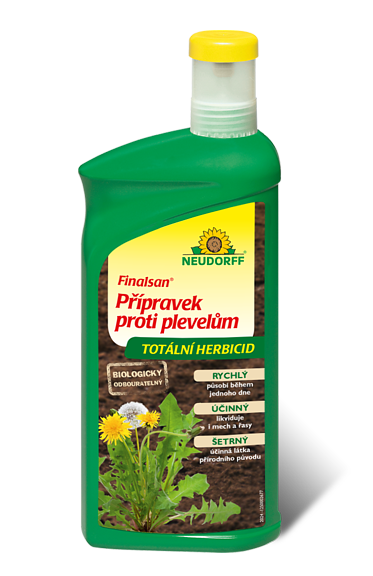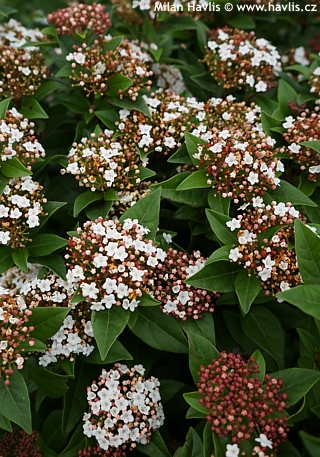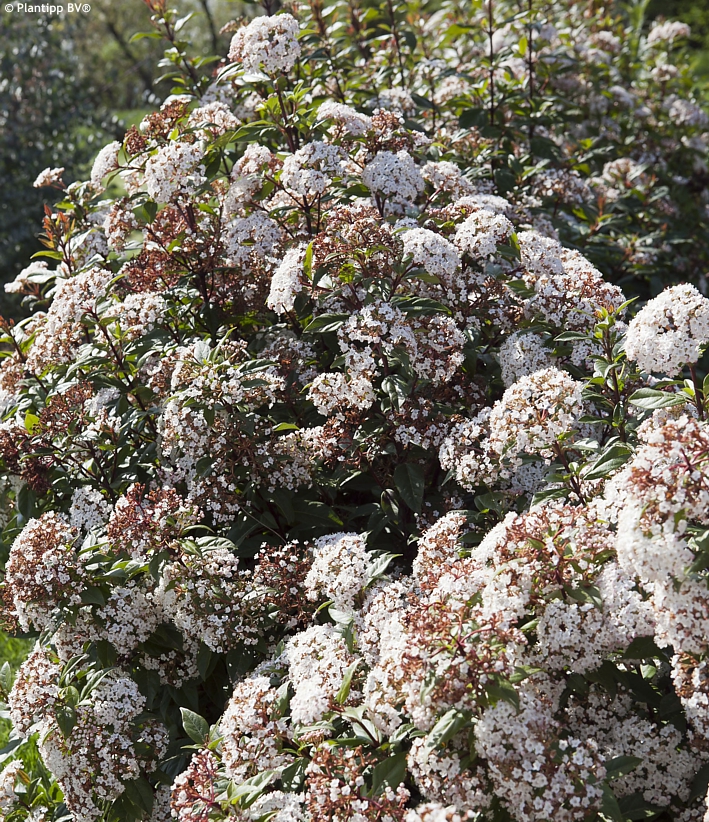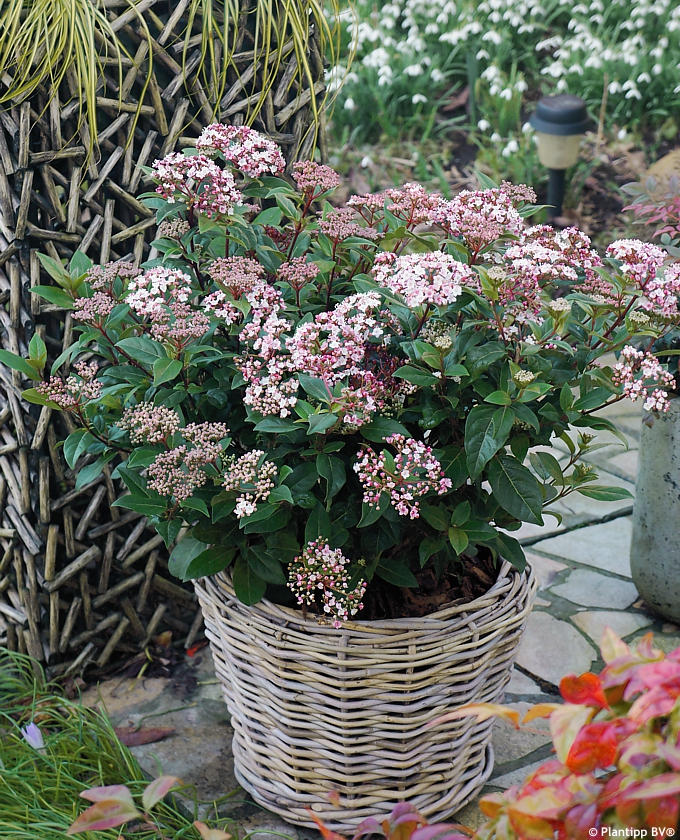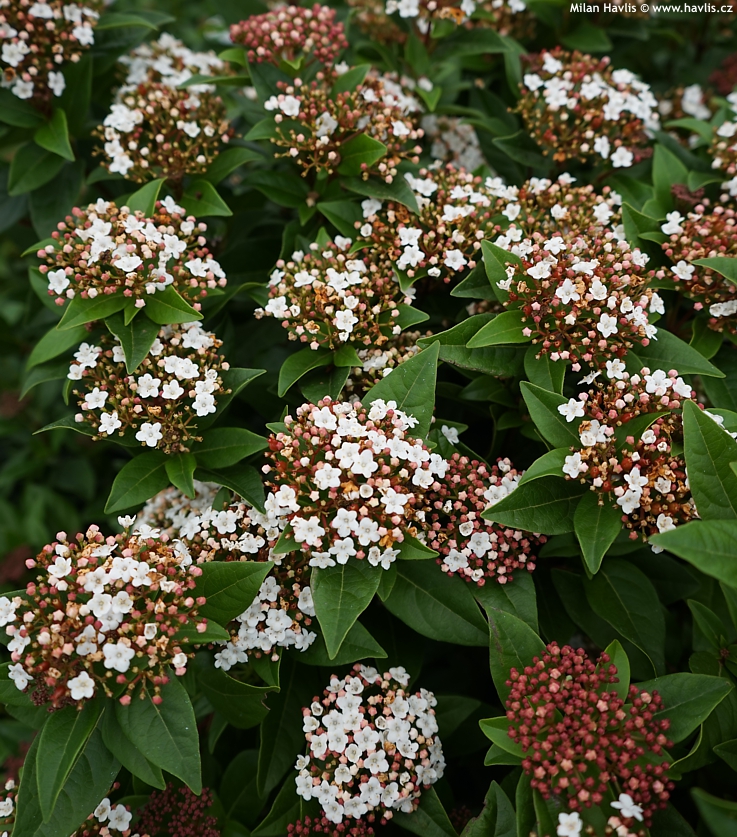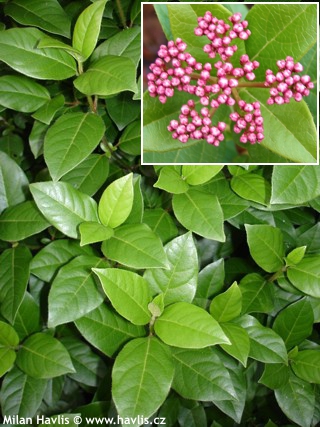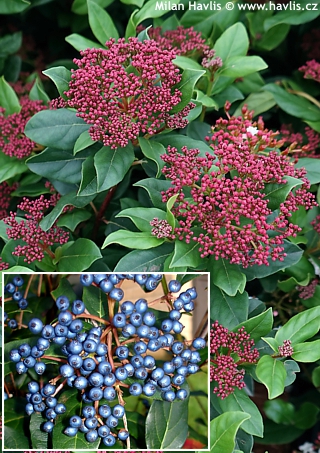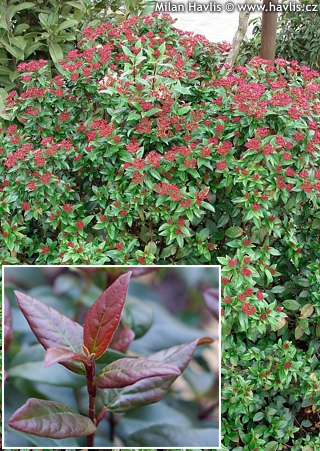Viburnum tinus 'Anvi' SPIRIT laurustinus
Viburnum
Laurustinus is a tough, evergreen shrub from the Mediterranean basin whose native habitat ranges from Portugal and Spain in the west, to Turkey in the east, and from Libya in the south, back to Morocco in the southwest, including nearby islands (Canary, Balearic etc.). It is so versatile to grow in dry and hot climate near Africa as well as in milder parts of Europe with higher humidity and rainfall. Unlike most other shrubs indigenous to dry lands of the Mediterranean that are commonly spiny, prickly, or exhibit another turn-off, laurustinus boasts handsome, leathery but soft, entire (spine-free) foliage. Interestingly, on the other hand it proved hardy enough to grow happily down to USDA zone 7, but let’s check its varieties first.
SPIRIT is compact laurustinus variety introduced by Antigone Plantvermeerdering B.V. and protected by European patent No. EU 2352 from 1997. It grows slowly into a mounding to rounded, densely branched shrub with attractive foliage and flower buds. Its evergreen leaves are up 4-6 cm long, ovate, leathery but thinner than most evergreens, dark green, and with conspicuous venation. In autumn it produces a profusion of terminal cymes composed of maroon flower buds which turn light mahogany brown/orange as they open into tiny, white, fragrant flowers. Blooming begins already in November in mild winters of zones 7 and higher. In colder areas they open in late winter or early spring and are followed by small, inedible but not poisonous, blue berries. SPIRIT laurustinus exhibits a prolonged flowering period, and it is not uncommon to see both flowers and fruit on the same plant. Laurustinus is cultivated especially for its lush foliage and compact habit. It forms upright growing, dense shrubs and is often used in hedges in warmer zones. Stems turn purple red in autumn and winter.
Now, let’s explore its hardiness. Despite its origin many trials proved that it can be cultivated down to USDA zone 6 or even 5b where it is root hardy as a perennial. Even if the top growth is killed by frost it always regenerates from live framework, just prune it after harsh winter and in a couple of months you will again have a beautiful, leafy shrub. In zone 6 it is best to grow it a mixed border combined with other evergreen plants which create a microclimate protecting it from sudden temperature swings. Location hidden from winter sunlight is also recommended there. Our shrub survived our strongest winter of 2006/2007 (-27 °C for 3 consecutive nights) when it was killed almost to the ground but resprouted and in early summer it was some 45-50 cm tall and bushy.
Laurustinus will grow virtually in any free-draining soil, but performs best in fertile, moist soil, acidic pH will help the foliage keep its healthy, deep green colour but is not a must. Mulching is crucial in zone 6 and lower. Small plants should be covered by evergreen boughs in winter. Fully (stem) hardy to -17 °C (zone 7), and root-hardy down to even -27 °C (USDA zone 5b) with protection.
Last update 31-01-2021






























